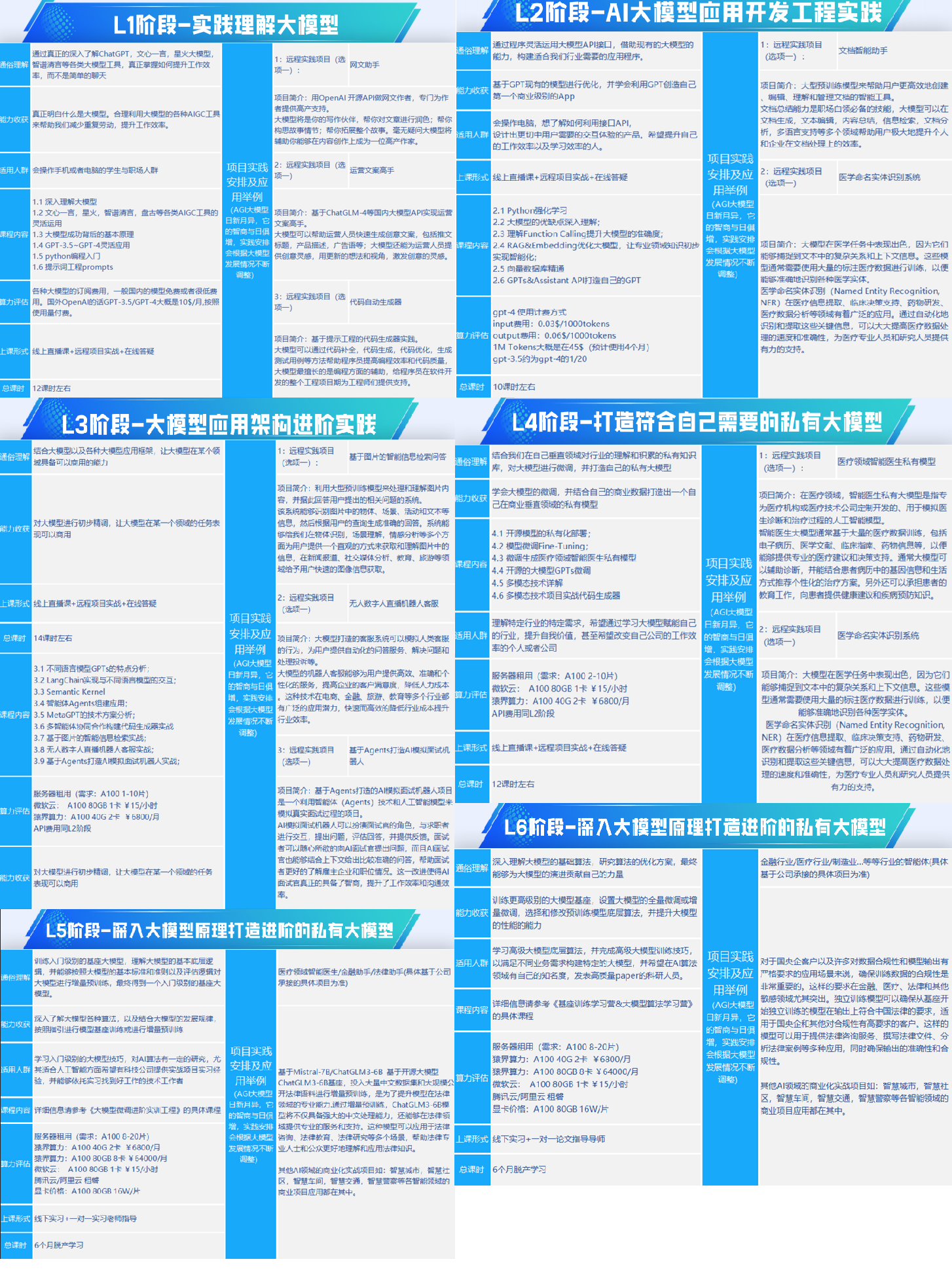使用 HuggingFace 中的 Trainer 进行 BERT 模型微调,太方便了!!!
针对算法岗技术趋势、大模型落地项目经验分享、新手如何入门算法岗、该如何准备、面试常考点分享等热门话题进行了深入的讨论。
以往,我们在使用HuggingFace在训练BERT模型时,代码写得比较复杂,涉及到数据处理、token编码、模型编码、模型训练等步骤,从事NLP领域的人都有这种切身感受。
事实上,HugggingFace中提供了datasets模块(数据处理)和Trainer函数,使得我们的模型训练较为方便。
本文将会介绍如何使用HuggingFace中的Trainer对BERT模型微调。
Trainer
Trainer是HuggingFace中的模型训练函数,其网址为:https://huggingface.co/docs/transformers/main_classes/trainer 。
Trainer的传入参数如下:
model: typing.Union[transformers.modeling_utils.PreTrainedModel, torch.nn.modules.module.Module] = None
args: TrainingArguments = None
data_collator: typing.Optional[DataCollator] = None
train_dataset: typing.Optional[torch.utils.data.dataset.Dataset] = None
eval_dataset: typing.Union[torch.utils.data.dataset.Dataset, typing.Dict[str, torch.utils.data.dataset.Dataset], NoneType] = None
tokenizer: typing.Optional[transformers.tokenization_utils_base.PreTrainedTokenizerBase] = None
model_init: typing.Union[typing.Callable[[], transformers.modeling_utils.PreTrainedModel], NoneType] = None
compute_metrics: typing.Union[typing.Callable[[transformers.trainer_utils.EvalPrediction], typing.Dict], NoneType] = None
callbacks: typing.Optional[typing.List[transformers.trainer_callback.TrainerCallback]] = None
optimizers: typing.Tuple[torch.optim.optimizer.Optimizer, torch.optim.lr_scheduler.LambdaLR] = (None, None)
preprocess_logits_for_metrics: typing.Union[typing.Callable[[torch.Tensor, torch.Tensor], torch.Tensor], NoneType] = None )
参数解释:
-
model为预训练模型 -
args为TrainingArguments(训练参数)类 -
data_collator会将数据集中的元素组成一个batch,默认使用default_data_collator(),如果tokenizer没有提供,则使用DataCollatorWithPadding -
train_dataset,eval_dataset为训练集,验证集 -
tokenizer为模型训练使用的tokenizer -
model_init为模型初始化 -
compute_metrics为验证集的评估指标计算函数 -
callbacks为训练过程中的callback列表 -
optimizers为模型训练中的优化器 -
preprocess_logits_for_metrics为模型评估阶段前对logits的预处理
TrainingArguments为训练参数类,其网址为:https://huggingface.co/docs/transformers/main_classes/trainer#transformers.TrainingArguments,传入参数非常多(transformers版本4.32.1中有98个参数!),我们在这里只介绍几个常见的:
output_dir: stroverwrite_output_dir: bool = False
evaluation_strategy: typing.Union[transformers.trainer_utils.IntervalStrategy, str] = 'no'
per_gpu_train_batch_size: typing.Optional[int] = None
per_gpu_eval_batch_size: typing.Optional[int] = None
learning_rate: float = 5e-05
num_train_epochs: float = 3.0
logging_dir: typing.Optional[str] = None
logging_strategy: typing.Union[transformers.trainer_utils.IntervalStrategy, str] = 'steps'
save_strategy: typing.Union[transformers.trainer_utils.IntervalStrategy, str] = 'steps'save_steps: float = 500
report_to: typing.Optional[typing.List[str]] = None
参数解释:
-
output_dir为模型输出目录 -
evaluation_strategy为模型评估策略-
“no": 不做模型评估
-
“steps”: 按训练步数(steps)进行评估,需指定步数
-
“epoch”: 每个epoch训练完后进行评估
-
-
per_gpu_train_batch_size,per_gpu_eval_batch_size为每个GPU上训练集和测试集的batch size,也有CPU上的对应参数 -
learning_rate为学习率 -
logging_dir为日志输出目录 -
logging_strategy为日志输出策略,同样有no, steps, epoch三种,意义同上 -
save_strategy为模型保存策略,同样有no, steps, epoch三种,意义同上 -
report_to为模型训练、评估中的重要指标(如loss, accurace)输出之处,可选择azure_ml, clearml, codecarbon, comet_ml, dagshub, flyte, mlflow, neptune, tensorboard, wandb,使用all会输出到所有的地方,使用no则不会输出。
下面我们使用Trainer进行BERT模型微调,给出英语、中文数据集上文本分类的示例代码。
BERT 微调
使用datasets模块导入imdb数据集(英语影评数据集,常用于文本分类),加载预训练模型bert-base-cased的tokenizer。
import numpy as np
from transformers import AutoTokenizer, DataCollatorWithPadding
import datasets
checkpoint = 'bert-base-cased'
tokenizer = AutoTokenizer.from_pretrained(checkpoint)
raw_datasets = datasets.load_dataset('imdb')
查看数据集,有train(训练集)、test(测试集)、unsupervised(非监督)三部分,我们这里使用训练集和测试集,各自有25000个样本。
raw_datasets
DatasetDict({
train: Dataset({
features: ['text', 'label'],
num_rows: 25000
})
test: Dataset({
features: ['text', 'label'],
num_rows: 25000
})
unsupervised: Dataset({
features: ['text', 'label'],
num_rows: 50000
})
})
创建数据tokenize函数,对文本进行tokenize,最大长度设置为300,同时使用data_collector为DataCollatorWithPadding。
def tokenize_function(sample):
return tokenizer(sample['text'], max_length=300, truncation=True)
tokenized_datasets = raw_datasets.map(tokenize_function, batched=True)
data_collator = DataCollatorWithPadding(tokenizer=tokenizer)
加载分类模型,输出类别为2.
from transformers import AutoModelForSequenceClassification
model = AutoModelForSequenceClassification.from_pretrained(checkpoint, num_labels=2)
设置compute_metrics函数,在评估过程中输出accuracy, f1, precision, recall四个指标。设置训练参数TrainingArguments类,设置Trainer。
from transformers import Trainer, TrainingArguments
from sklearn.metrics import accuracy_score, precision_recall_fscore_support
def compute_metrics(pred):
labels = pred.label_ids
preds = pred.predictions.argmax(-1)
precision, recall, f1, _ = precision_recall_fscore_support(labels, preds, average='weighted')
acc = accuracy_score(labels, preds)
return {
'accuracy': acc,
'f1': f1,
'precision': precision,
'recall': recall
}
training_args = TrainingArguments(output_dir='imdb_test_trainer', # 指定输出文件夹,没有会自动创建
evaluation_strategy="epoch",
per_device_train_batch_size=32,
per_device_eval_batch_size=32,
learning_rate=5e-5,
num_train_epochs=3,
warmup_ratio=0.2,
logging_dir='./imdb_train_logs',
logging_strategy="epoch",
save_strategy="epoch",
report_to="tensorboard")
trainer = Trainer(
model,
training_args,
train_dataset=tokenized_datasets["train"],
eval_dataset=tokenized_datasets["test"],
data_collator=data_collator, # 在定义了tokenizer之后,其实这里的data_collator就不用再写了,会自动根据tokenizer创建
tokenizer=tokenizer,
compute_metrics=compute_metrics
)
开启模型训练。
trainer.train()
输出结果如下:
| Epoch | Training Loss | Validation Loss | Accuracy | F1 | Precision | Recall |
|---|---|---|---|---|---|---|
| 1 | 0.364300 | 0.223223 | 0.910600 | 0.910509 | 0.912276 | 0.910600 |
| 2 | 0.164800 | 0.204420 | 0.923960 | 0.923941 | 0.924375 | 0.923960 |
| 3 | 0.071000 | 0.241350 | 0.925520 | 0.925510 | 0.925759 | 0.925520 |
以上为英语数据集的文本分类模型微调。
中文数据集使用sougou-mini数据集(训练集4000个样本,测试集495个样本,共5个输出类别),预训练模型采用bert-base-chinese。代码基本与英语数据集差不多,只要修改 预训练模型,数据集加载 和 最大长度为128,输出类别。以下是不同的代码之处:
import numpy as np
from transformers import AutoTokenizer, DataCollatorWithPadding
import datasets
checkpoint = 'bert-base-chinese'
tokenizer = AutoTokenizer.from_pretrained(checkpoint)
data_files = {"train": "./data/sougou/train.csv", "test": "./data/sougou/test.csv"}
raw_datasets = datasets.load_dataset("csv", data_files=data_files, delimiter=",")
...
model = AutoModelForSequenceClassification.from_pretrained(checkpoint, num_labels=5)
...
输出结果如下:
| Epoch | Training Loss | Validation Loss | Accuracy | F1 | Precision | Recall |
|---|---|---|---|---|---|---|
| 1 | 0.849200 | 0.115189 | 0.969697 | 0.969449 | 0.970073 | 0.969697 |
| 2 | 0.106900 | 0.093987 | 0.973737 | 0.973770 | 0.975372 | 0.973737 |
| 3 | 0.047800 | 0.078861 | 0.973737 | 0.973740 | 0.974117 | 0.973737 |
模型评估
在上述模型评估过程中,已经有了模型评估的各项指标。
本文也给出单独做模型评估的代码,方便后续对模型做量化时(后续介绍BERT模型的动态量化)获取量化前后模型推理的各项指标。
中文数据集文本分类模型评估代码如下:
import torch
from transformers import AutoModelForSequenceClassification
MAX_LENGTH = 128
device = torch.device("cuda:0" if torch.cuda.is_available() else "cpu")
checkpoint = f"./sougou_test_trainer_{MAX_LENGTH}/checkpoint-96"
model = AutoModelForSequenceClassification.from_pretrained(checkpoint).to(device)
from transformers import AutoTokenizer, DataCollatorWithPadding
tokenizer = AutoTokenizer.from_pretrained(checkpoint)
import pandas as pd
test_df = pd.read_csv("./data/sougou/test.csv")
test_df.head()
import numpy as np
import time
s_time = time.time()
true_labels, pred_labels = [], []
for i, row in test_df.iterrows():
row_s_time = time.time()
true_labels.append(row["label"])
encoded_text = tokenizer(row['text'], max_length=MAX_LENGTH, truncation=True, padding=True, return_tensors='pt').to(device)
# print(encoded_text)
logits = model(**encoded_text)
label_id = np.argmax(logits[0].detach().cpu().numpy(), axis=1)[0]
pred_labels.append(label_id)
if i % 100 == 0:
print(i, (time.time() - row_s_time)*1000, label_id)
print("avg time: ", (time.time() - s_time) * 1000 / test_df.shape[0])
0 229.3872833251953 0
100 362.0314598083496 1
200 311.16747856140137 2
300 324.13792610168457 3
400 406.9099426269531 4
avg time: 352.44047810332944
true_labels[:10]
[0, 0, 0, 0, 0, 0, 0, 0, 0, 0]
pred_labels[:10]
[0, 0, 0, 0, 0, 0, 0, 0, 0, 0]
from sklearn.metrics import classification_report
print(classification_report(true_labels, pred_labels, digits=4))
输出结果如下:
precision recall f1-score support
0 0.9900 1.0000 0.9950 99
1 0.9691 0.9495 0.9592 99
2 0.9900 1.0000 0.9950 99
3 0.9320 0.9697 0.9505 99
4 0.9895 0.9495 0.9691 99
accuracy 0.9737 495
macro avg 0.9741 0.9737 0.9737 495
weighted avg 0.9741 0.9737 0.9737 495
总结
本文介绍了如何使用HuggingFace中的Trainer对BERT模型微调。可以看到,使用Trainer进行模型微调,代码较为简洁,且支持功能丰富,是理想的模型训练方式。
如何学习AI大模型?
作为一名热心肠的互联网老兵,我决定把宝贵的AI知识分享给大家。 至于能学习到多少就看你的学习毅力和能力了 。我已将重要的AI大模型资料包括AI大模型入门学习思维导图、精品AI大模型学习书籍手册、视频教程、实战学习等录播视频免费分享出来。
这份完整版的大模型 AI 学习资料已经上传CSDN,朋友们如果需要可以微信扫描下方CSDN官方认证二维码免费领取【保证100%免费】

一、全套AGI大模型学习路线
AI大模型时代的学习之旅:从基础到前沿,掌握人工智能的核心技能!

二、640套AI大模型报告合集
这套包含640份报告的合集,涵盖了AI大模型的理论研究、技术实现、行业应用等多个方面。无论您是科研人员、工程师,还是对AI大模型感兴趣的爱好者,这套报告合集都将为您提供宝贵的信息和启示。

三、AI大模型经典PDF籍
随着人工智能技术的飞速发展,AI大模型已经成为了当今科技领域的一大热点。这些大型预训练模型,如GPT-3、BERT、XLNet等,以其强大的语言理解和生成能力,正在改变我们对人工智能的认识。 那以下这些PDF籍就是非常不错的学习资源。

四、AI大模型商业化落地方案

作为普通人,入局大模型时代需要持续学习和实践,不断提高自己的技能和认知水平,同时也需要有责任感和伦理意识,为人工智能的健康发展贡献力量。
更多推荐
 已为社区贡献6条内容
已为社区贡献6条内容







所有评论(0)